Review: Asus Zenfone AR for Verizon Wireless
Sep 8, 2017, 10:30 AM by Eric M. Zeman
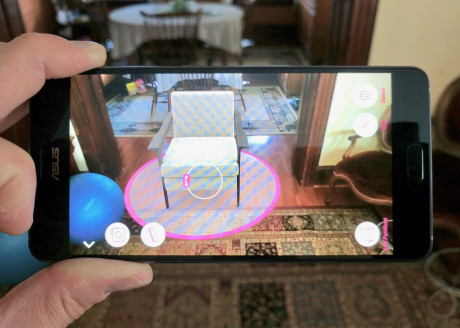
The Zenfone AR from Asus is the first to support Google's Project Tango augmented reality and Daydream virtual reality platforms. This ultra-real Android smartphone lets you visualize what furniture might look like in your living room, or escape your living room altogether in favor of worlds unknown. With entertainment options galore, you might think the Zenfone AR skimps out on other features, but that's not the case. This well-rounded handset nearly has it all. Here is Phone Scoop's in-depth report.
Hardware
Is It Your Type?
With support for Project Tango and Daydream, the Asus Zenfone AR is for augmented reality and virtual reality enthusiasts. If you long to escape the real world to explore new and virtual environments, the Zenfone AR is the tool you need.
Body
The Asus Zenfone AR is the first smartphone to include Google's Project Tango augmented reality platform and Google's Daydream virtual reality platform out of the box. Both platforms have some hardware requirements in order to function properly, though it's Project Tango that we can thank for the Zenfone AR's unique design.
When the Zenfone AR is sitting face up on a table or desk, it looks like just about any plain Android handset. A huge piece of glass covers the entire front surface. The glass fits into a dark gray frame made of aluminum. The frame has chamfers that help define the shape and give the Zenfone AR some visual pop. I like that the side edges are rounded a bit. Asus opted for a leather-type skin for the rear surface, rather than metal or glass. It's black and has a matte finish. I'd call it soft to the touch, and it certainly lends some grip to the phone. The camera and sensor array is an enormous module that looks like it was assimilated from the Borg. It stands out because it's so different from the majority of smartphone cameras. The camera/sensor array gives the phone an industrial, 23rd Century look.
The Zenfone AR is a really big piece of hardware. It's larger than an iPhone 7 Plus or Pixel XL, and is about equal to a Huawei Mate 9. It's shorter than the Samsung Note8, but somewhat wider. It stands a ridiculous 6.24 inches tall and measures more than 3 inches wide. These dimensions make it difficult to use one-handed. The majority of people who encounter the Zenfone AR will need both mitts to make the most of it. The good news is that the phone isn't too heavy, and is even almost slim at 7.6mm thick. It's not the easiest handset to cram into your jeans, but the rounded back and corners go a long way.
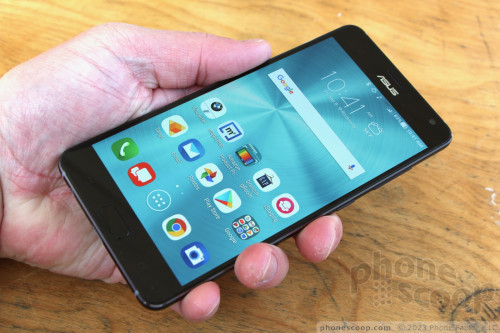
Asus selected decent materials for this handset. The glass face and metal frame definitely give me confidence in the strength and durability of the phone, and the pieces fit together well. I'm not 100% sold on the way Asus treated the rear panel. I dig leather, there's no question there, though I worry it will scuff, scratch, or tear. The leather is set into a plastic frame and that assembly is then set into the larger metal chassis. The seam between the plastic and metal pieces creates a ridge, and it's a bit sharp and uncomfortable. It would be worse were the rear panel not tapered toward the edges.
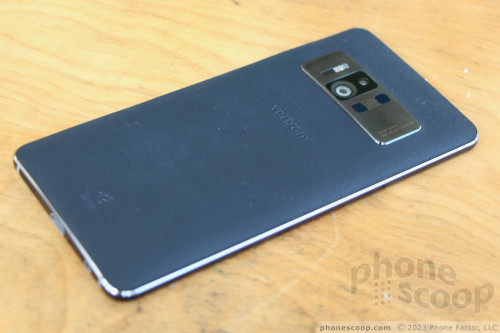
Annoying, iPhone-like bezels mar the Zenfone AR's face. The chin and forehead above and below the screen are probably an inch thick each, and there are even some black bars running down the side edges. Bleh. The Asus logo, painted on in chrome, begs you to look at it. The user-facing camera and sensor array are mostly invisible. The Zenfone AR does rely on hardware controls. It has a physical home button that doubles as a fingerprint reader. The button is raised a bit, which helps your thumb locate it; travel and feedback are great. It's flanked by two capacitive buttons, for back and the app-switcher. The buttons are under the glass and can be hard to find without looking.
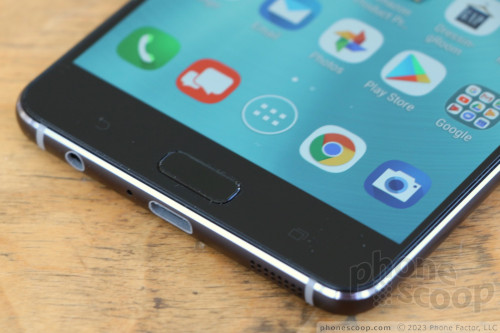
The metal chassis is perfectly smooth along the left edge, save for the small SIM/memory card tray. You'll find the lock button and volume toggle on the phone's right side. The buttons both have a fine ridged texture that I like. The screen lock button is the lower of the two. It's helpful that the volume toggle is more than twice as long as the screen lock key. Both deliver good travel and feedback. Asus packed the lower edge with the USB-C port, headphone jack, microphone, and speakerphone. It's a busy place!
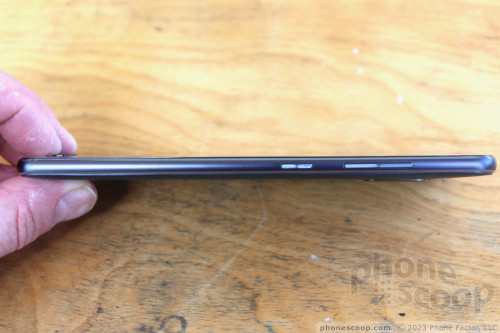
I like the curved shape of the Zenfone AR's rear panel. Of course Verizon's logo is stamped into the leather surface. The camera module is just ridiculous. It's a thick metal rectangle and looks like it belongs on the bridge of a spaceship. Two camera lenses are plainly visible within the module, with one nearly 5x the size of the other. To their left you'll see a focusing array and triple-LED flash module, while to the right you'll spot twin infrared sensors. These are all necessary for full Project Tango functionality. It's a shame Asus couldn't find a more attractive arrangement.
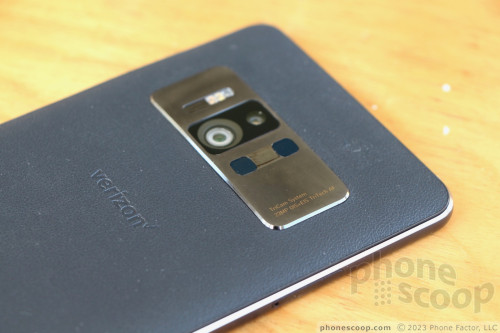
As you might expect these days, the rear panel is firmly affixed to the chassis and cannot be removed. Users do not have access to the internal battery. The Zenfone AR is not waterproof, nor is it rugged.
Asus designed an oddly jarring phone in the Zenfone AR. It's downright boring on the front, and yet industrial science fiction on the back with a hint of rock and roll. I don't know if these elements necessarily work when wrapped up together, but at least the hardware works well.
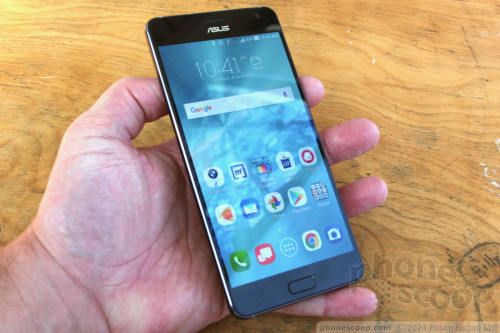
Screen
Augmented and virtual reality both benefit from high-resolution displays and Asus dialed in the right set of specs with the Zenfone AR's screen. It measures 5.7 inches across the diagonal with the standard 16:9 aspect ratio, and packs quad HD (2,560 by 1,440 pixels) resolution. Daydream requires an AMOLED display, and that's what you'll find lighting the pixels of the Zenfone AR.
It's a really pretty screen. Text, pictures, and icons on the screen are completely smooth along the edges, and the display pushes out plenty of brightness for easy visibility both indoors and out. Colors border a bit on the cool side. Viewing angles are outstanding. You can opt to turn on glove mode, too, when using the phone outdoors in cold weather. It's a fine display, and works well when put to use for AR/VR.
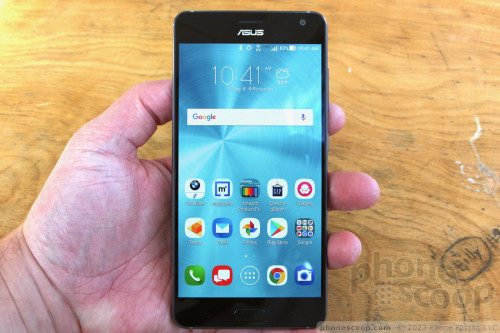
Signal
The Zenfone AR is sold in the U.S. by Verizon Wireless. During my time with the phone it remained on 4G LTE most of the time, though in some weak coverage areas it dropped to 3G on occasion. It never dropped Big Red's network completely, and was always able to patch a call through. The phone had no trouble maintaining a call over 20 miles of highway driving. Data speeds were very good, though short of the best I've seen. The Zenfone AR technically supports Cat 14 LTE, which should put it among the fastest as far as specs are concerned. What you need to know is that the data radio handled streaming HD content from Netflix and YouTube with no problem.
Sound
I was mostly pleased with the Zenfone AR as a voice phone. The earpiece delivered warm vocal tones to my ear at volumes that were good enough to overcome normal home of office noise. I had more difficulty hearing people through the Zenfone AR when taking calls on city streets or in coffee shops, but cranking the volume generally helped, and with minimal distortion.
If you opt to turn on Verizon's Advanced Calling service — which pushes HD Voice calls via VoLTE — you'll be rewarded with incredibly clear calls as long as both you and your callee are on Verizon's LTE network.
The speakerphone worked very well. Clarity was excellent and the small, bottom-mounted speaker is easy to hear as long as you aim it at your head. Cranking the volume introduced a small amount of distortion, but not enough to prevent you from understanding calls. You can use the speakerphone in a moving car and noisy office if you need to.
Ringers and alerts always got my attention. In fact, the phone sports an "outdoor" speaker mode for ringers, alarms, and music for use when you're outside. Flipping this switch puts the ringtones into overdrive and makes the loud enough to lance your eardrum. The vibrate alert, on the other hand, is pathetically weak.
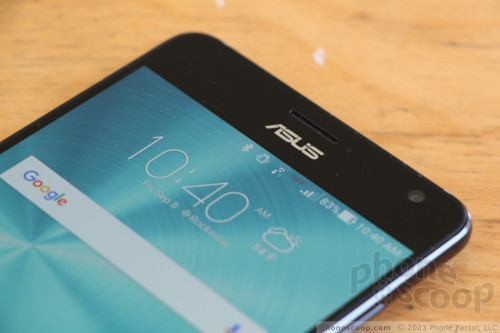
Battery
If you use the Zenfone AR as you would any regular old smartphone, it will get you through a full day without issue. If you use the AR or VR features, battery life is measured in mere hours.
I found over the course of a week of testing that the Zenfone AR easily managed to push from breakfast to bedtime on a single charge. The phone packs a 3,300 mAh battery. It does well under normal conditions. The battery will drain a bit more rapidly if you mix in some media streaming and picture taking, but that's fairly normal.
Augmented reality and virtual reality are both screen- and processor-intensive activities. Your Zenfone AR's processor will kick into high gear when you dip your toes into virtual worlds, making it hot and draining the battery. I saw the battery drop by about 50% in less than an hour when using Daydream. Plan accordingly.
Some good news: The phone supports rapid charging via Qualcomm's Quick Charge 3.0. This means you can enjoy some AR/VR and restore your depleted battery in short order.
Last but not least, the Zenfone AR supports a wide variety of power-saving modes. There are five options, including four presets and one customizable tool. You can dial in high performance for the ultimate in VR behavior, or dial it way back to extend battery life as long as possible. The default mode is "normal" and that is what I used when testing the phone.
Bluetooth, GPS, NFC, WiFi
I didn't run into any issues using the Zenfone AR's secondary radios. Bluetooth, for example, paired and connected with a variety of devices including phones, PCs, speakers, and headsets. Phone calls sent through my car's hands-free system were just average, but calls via Bluetooth headphones sounded very good. Music pushed to a pair of Bluetooth headphones wasn't quite as vibrant as I would have liked.
The NFC radio made pairing with some accessories a snap, and the Zenfone AR supports Android Pay if you care to use it.
As a navigation tool, the Zenfone AR performed as well as any other phone on the market. The GPS radio pinpointed me quickly and to within about 25 feet most of the time. It coordinated with Google Maps and worked fine when put to use for voice-guided, point-to-point directions.
The Zenfone AR's WiFi radio did its job.
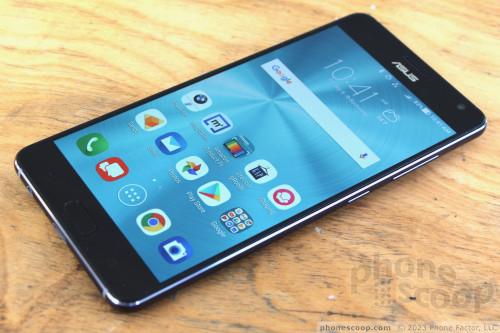
Software
Lock Screen
The lock screen could be better. To start, there's nothing like an Always On / Active Display. This has become a table stakes feature on flagship phones as far as I am concerned. I like to be able to glean the time, weather, and basic notification alerts without touching or otherwise interacting with my phone. I found no joy on that front with the Zenfone AR. The screen is always dark.
Press either the home button or screen lock button to wake the display. The lock screen does show you the time and weather along with app shortcuts and simple notifications. Oddly, the clock and app shortcuts are all bunched up in the upper left corner of the display. I don't really care where the clock is, but the app shortcuts would be easier to use if they were positioned at the bottom of the display. You can customize which three apps are accessible from these shortcuts. A shortcut to the camera is always available on the lower right corner.
On the security front, the Zenfone AR has you covered. The front-mounted fingerprint sensor is easy to interact with. I was able to set up multiple prints and the reader confirmed them quickly and consistently. If biometrics isn't your bag, you can opt for the PIN, pattern, or password options.
Home Screens
Asus has coated the Zenfone AR's Android Nougat operating system with a tolerable UI skin. The home screens behave like most Android handsets. Out of the box you're going to see a lot of Verizon apps and widgets pre-installed on the home screens, but you can toss it all and customize them however you wish.
The Zenfone AR includes an app drawer. Verizon and Asus packed the app drawer with folders and most of the installed apps are hidden within. That makes for a clean app drawer, but of course you can organize it nearly however you want. Apps can be arranged alphabetically, by download date, by frequency of use, or in custom order. I appreciate that you can alter the grid size and hide the bloatware that Verizon loaded on the phone.
The Quick Settings shade and full settings menus are much more colorful than stock Android thanks to Asus's interface skin. The large icons and pleasing tones leave the usability of these tools intact. As always, you can edit the Quick Settings panel. The settings menu is arranged as expected. You can adjust the size of icons and fonts, as well as most everything else.
ZenMotion is Asus's gesture-based UI tool. It's off by default, but you can switch it on and use it to control various functions of the phone. For example, double-tap to wake the display or turn it off, or draw a "W" on the screen (when off) to open the weather app. You can draw an "S" to open the selfie camera or a "C" to open the main camera. Or, if you wish, customize which letters open which apps. These work well, but I can't say they are any faster than using the lock screen shortcuts.
The Zenfone AR includes a Qualcomm Snapdragon 821 processor with 6 GB of RAM. This is a good combination. The 821 is a fine processor, and is the same chip found in LG's G6 flagship handset. The Zenfone AR has more than enough power to handle augmented reality and virtual reality applications, which means normal operation is incredibly quick.
Camera
The camera app is quite something.
You can open it several different ways: double press the up volume toggle, use the lock screen shortcut, or tap the home screen icon. It opens swiftly.
The viewfinder is fairly typical for most phones. You'll see some basic controls (flash, HDR, selfie cam) on the left, the viewfinder in the middle, etc. The camera defaults to Auto mode. You can toggle the flash and HDR to on, off, or, auto, which I appreciate. There's a toggle for jumping between auto and manual modes. As to be expected, the manual mode lets you take control of just about every aspect of the camera's behavior.
Then there are the shooting modes. The Zenfone AR has 17 (seventeen!) different shooting modes: auto, manual, HDR pro, beautification, super resolution, children, low light, QR code, night, depth of field, filter, selfie, pano, miniature, time rewind, slow motion, and time lapse. The majority of these shooting modes operate as you expect them to.
The "children" mode will snap a shot when it sees your kids' pearly whites. This mode doesn't function very consistently.
Miniature mode is meant to help you make the subject pop, sort of like bohea. It allows you to adjust three parameters: zoom, color saturation, and exposure. Select the item you want to highlight, dial in the rest of the settings, and snap the shot. It will make the subject pop and push everything else in the background far away. The results vary widely depending on how you tweak the three sliders. Here is a look at what it looks like to use the app and the results you'll get.
The depth-of-field tool, which utilizes both cameras, works really, really well. Focus on something close by with something else in the background. You can then select how sharp the background focus is after the shot. I dig it.
The settings allows you to fully customize how the camera operates and what its base functions do (resolution, picture quality, etc.)
The camera is very fast. I didn't have any problems with it at all with respect to performance.
Photos/Video
Asus gave the Zenfone AR a 23-megapixel main camera with an aperture of f/2.0. A secondary rear camera helps with focus, contrast, and exposure, but doesn't produce stand-alone images (such as wide-angle or telephoto).
I was pleased with the quality of photos I captured with the Zenfone AR. The majority of images demonstrated sharp focus, good exposure, and accurate white balance. When used as a regular old camera in everyday environments, the Zenfone AR is on par with many of today's top phones. I didn't see any glaring issues or problems to give me pause. It's a fine camera.
The selfie camera automatically activates the beauty mode. It's intense. Not only can you control the amount of skin smoothing, you can add blush, add effects to change the shape of your face, and dial brightness up and down. A screen-based flash helps illuminate shots in the darkest environments. The selfie cam takes very good photos. I think selfie enthusiasts will be pleased with the results.
Whether time-lapse, slow-motion, or plain old 4K video is your druthers, you'll be pleased with video the Zenfone AR produces. Focus, exposure, and color all looked great.
Asus did a great job with this phone's camera and video camera.
Project Tango
Project Tango relies on the Zenfone AR's cameras and sensors to scan the surrounding environment, create 3D maps, and then place or overlay content on top. The result means you can stick a virtual lamp on your bedside table to see if it matches the decor, or interact with dinosaurs in your living room.
This all differs a bit from Google's recently announced ARCore. In essence, ARCore can roughly measure two dimensions (length and width), but Project Tango adds height for a third dimension. It also takes accurate measurements. This makes a world (literally!) of difference. Virtual objects are actually displayed to scale, and objects can be anchored to the walls or ceiling. You can't currently do that without Tango's depth-sensing hardware.
The Project Tango apps and content haven't changed much since I first reviewed them last year. In fact, the only difference is that now a few more apps are available for download.
Only a single AR app is pre-installed: Measure. As the name implies, Measure is a tool for measuring distances. It's a digital measuring tape that you can use to estimate the distance between points. You can measure straight lines, or multiple lines (forming shapes like squares or triangles), to determine the total length of and/or around something. It doesn't do circles or curves. It's an awkward tool to use at best. The software automatically looks for straight edges and angles to help you set the dots and lines more accurately, but it's flighty, especially if there are patterns or contrasting surfaces/lines in the path you're attempting to measure. It's accurate about 75% of the time.
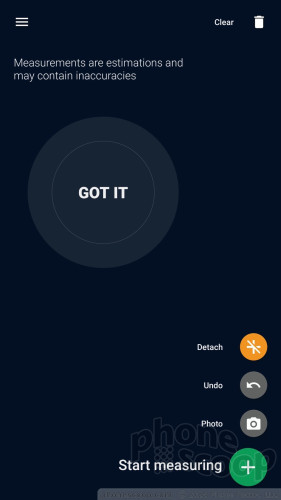
The app called "Project Tango" is actually just a storefront for AR apps. You need to download each one individually. Given that some AR apps are huge in size (>1GB), I can accept that the phone doesn't come with any AR apps preloaded: I'd rather select my own, thank you very much. While the selection is better than before, it's still relatively slim.
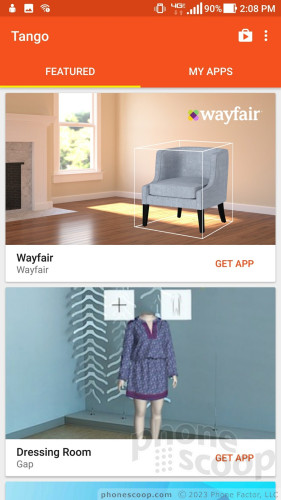
I won't bore you with rehashes of the Dinosaurs Among Us, Wayfair, Lowes, or the Holo apps. Some of the new ones include BMW i Visualizer, Chelsea Kicker, MagicPlan, and Domino World.
Some apps, but not all apps, take a few beats to map the immediate area, whether that's your office, living room, or basement. The apps coax you to move around, rotate the phone, point it at the walls, the floor, the ceiling, etc. You can see a grid appear on the screen as it starts measuring and drawing polygons.
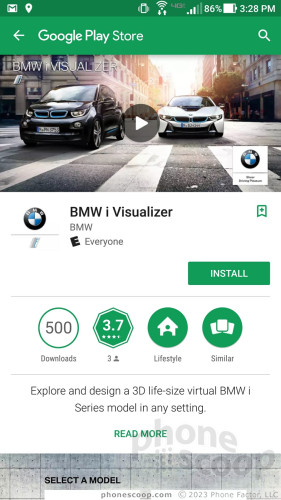
The BMW i Visualizer app is neat and depressing at the same time. It lets you "visualize" what a BMW i3 or i8 would look like in your driveway. You can flip between the interior and exterior color options, as well as select the wheels you prefer. I mean, I get it; it's a way to have some fun toying with the idea of buying an expensive car.
Perhaps a more helpful AR app is Amazon's Product Preview app. This one allows you to shop for a television set and check to see if it will fit in the space you have available. Check out what an 85-inch TV set looks like in my living room wall.
Then there's iStaging, which is sort of like WayFair. You use it to select home furniture items, such as lamps, tables, and chairs. You can then preview what they look like in your living room. I', not sold on the way this couch looks, which doesn't quite fit my home's decor.
Then there's a Gap AR app that lets you preview a handful of outfits. I wish there was a much wider selection of clothes in this app. Moreover, I wish you can somehow overlay the outfit on yourself. Instead, the app merely conjures up a mannequin in your home to show you what the outfit looks like.
I like the base apps offered for Project Tango, but I expected a lot more progress to be made in the wide gap since I last looked at a Tango handset. We have a long way to go. Given the hardware requirements of Project Tango, perhaps ARCore (which doesn't have hardware requirements) will coax more developers to explore AR apps. ARCore includes support for Tango hardware and the better experiences it provides, so it could really jump-start things.
Daydream
Daydream is Google's VR platform. It requires a Daydream VR headset, which is available directly from the Play Store or Verizon and/or Best Buy stores. What I like about Daydream is that it includes a hand controller. (Google's early VR effort, Cardboard, did not include a controller.) Daydream content is readily available, and the Zenfone AR ships with all the necessary software.
I dropped the phone in my Daydream headset and was immediately greeted by the familiar tutorial meant to help you orient yourself to Google's virtual world. It walks you through the basics of using the controller, finding apps, photos, and videos, and even discovering your own 360-degree content.
On the Zenfone AR, Daydream performed on par with every other phone that supports the platform. It does warm up, and will sap battery life noticeably, but Daydream works just as well on the Zenfone AR as it does the growing number of compatible phones.
Wrap-Up

If you're looking for a smartphone with average looks and somewhat above average performance, the Asus Zenfone AR fits that bill. The design is rather plebeian, but the screen, battery life, voice, and data performance all exceeded my expectations. The Android operating system is as customizable and flexible as ever, though I'm not the biggest fan of Asus's IS skin and Verizon's bloatware.
The Zenfone AR's camera app is easy to use and yet powerful at the same time. More importantly, the camera is surprisingly good, and its multiple modes of operation give you incredible opportunity to be creative.
What really sets the Zenfone AR apart is its support for both Project Tango augmented reality and Daydream virtual reality. As far as I am concerned, Project Tango as an AR platform simply hasn't come far enough since late last year to justify the limited selection of AR apps. Daydream is much more fun to explore, but you can find that on better flagships.
If you have $650 to burn on a smartphone, I suggest you skip Project Tango and go with something that supports Daydream, such as the all-around-excellent Google Pixel or Samsung Galaxy S8. If augmented reality is that important to you, the Zenfone AR is the only option worth exploring.

Comments
No messages


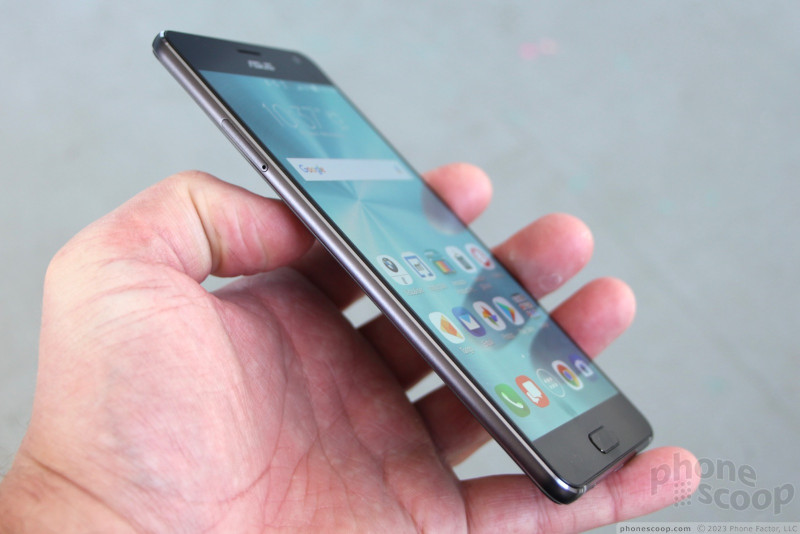













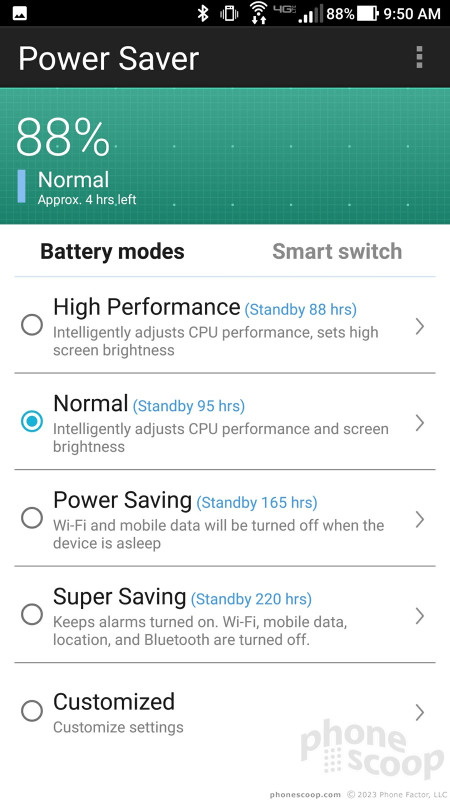





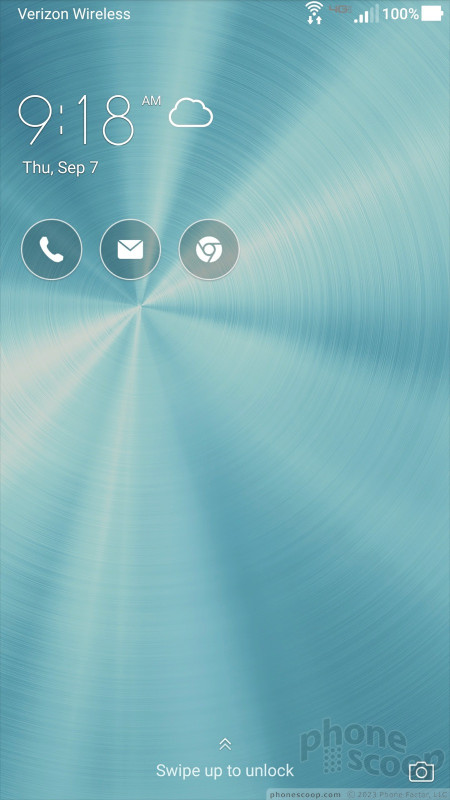





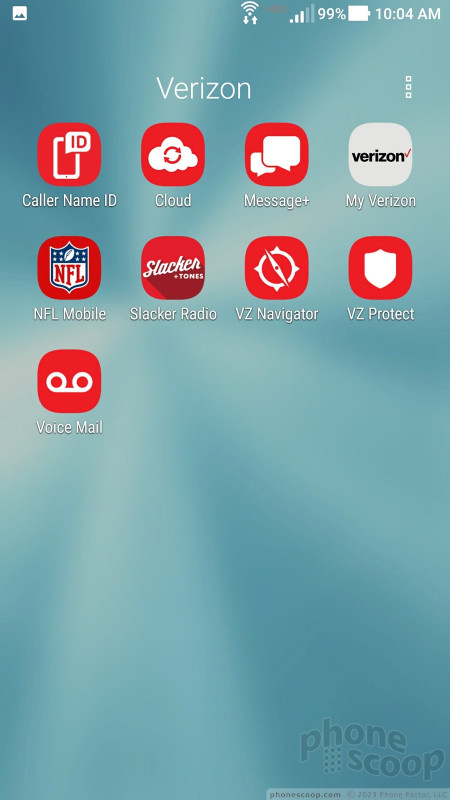










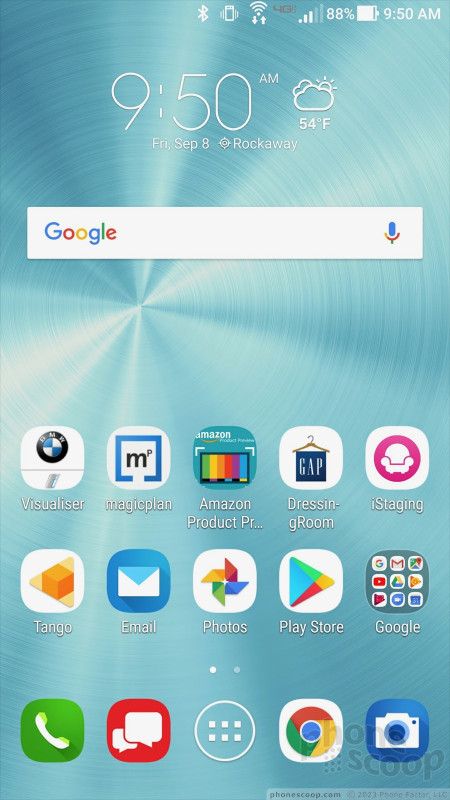





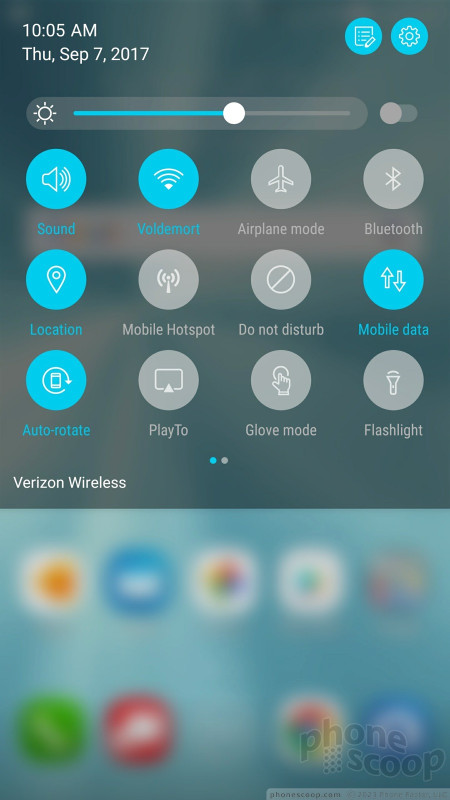








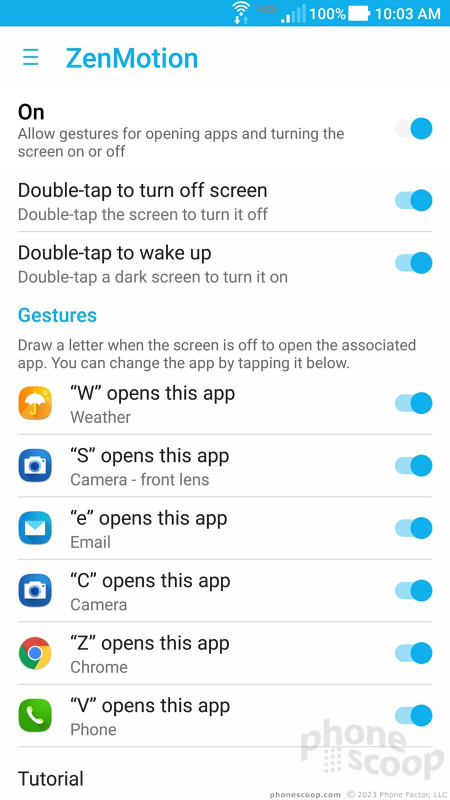





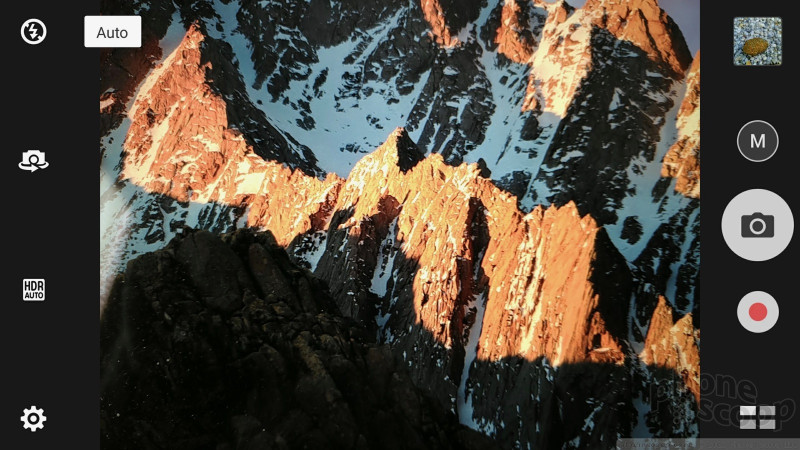






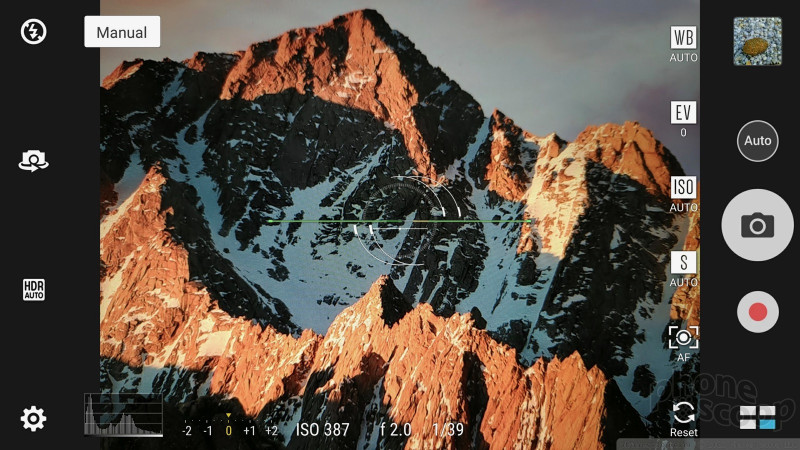





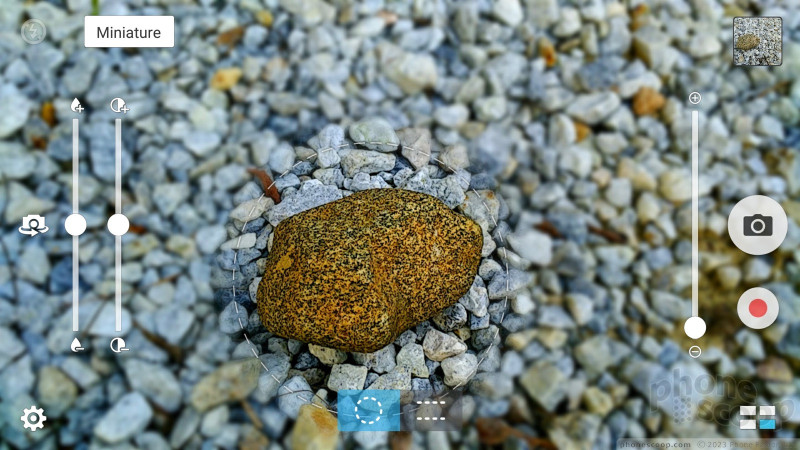






















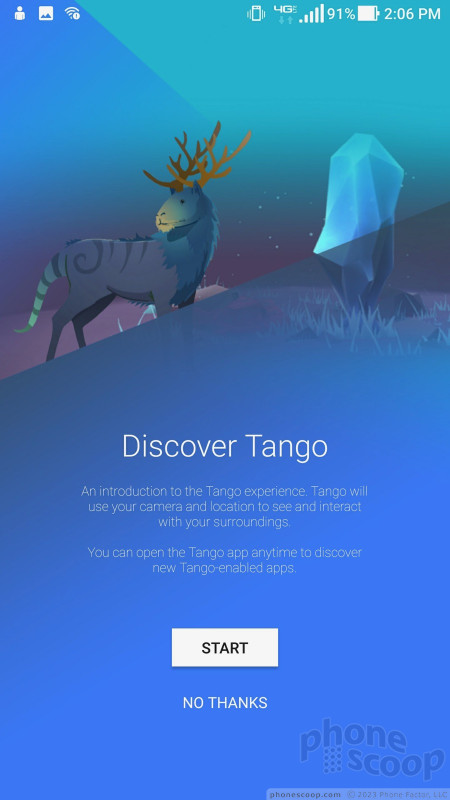





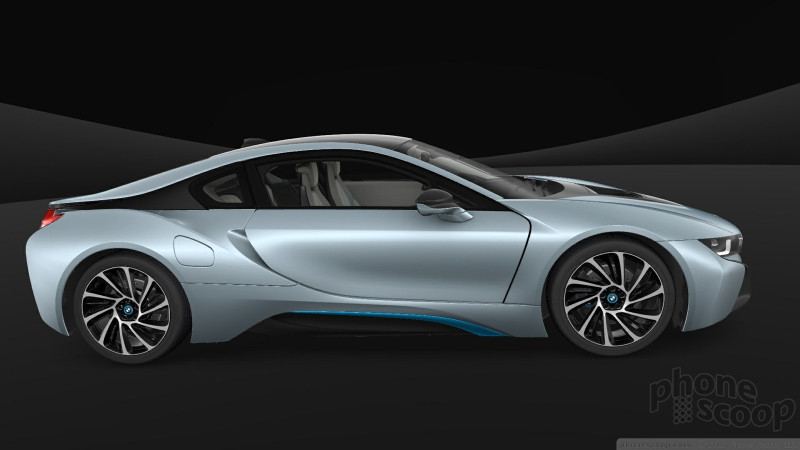










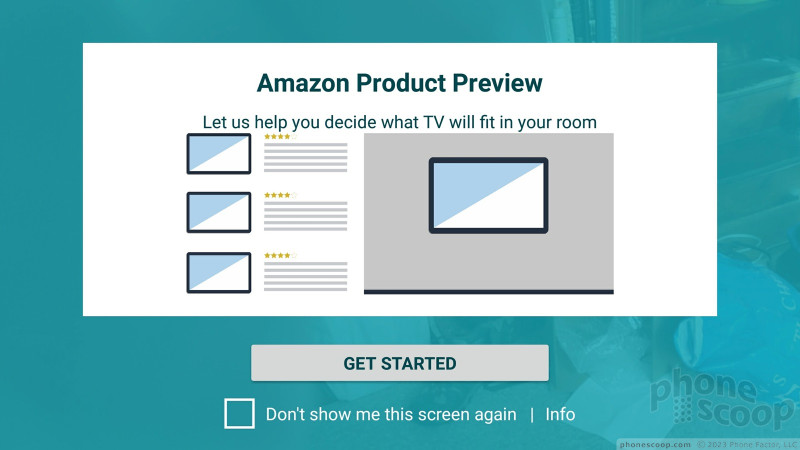



















 Holiday Gift Guide 2017
Holiday Gift Guide 2017
 Decorating with the Asus ZenFone AR
Decorating with the Asus ZenFone AR
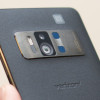 Hands On wth the Asus ZenFone AR
Hands On wth the Asus ZenFone AR
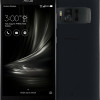 Project Tango Asus ZenFone AR Hits Verizon Stores Today
Project Tango Asus ZenFone AR Hits Verizon Stores Today
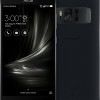 Verizon to Sell Asus' ZenFone AR Project Tango Phone
Verizon to Sell Asus' ZenFone AR Project Tango Phone
 Asus ZenFone AR
Asus ZenFone AR





